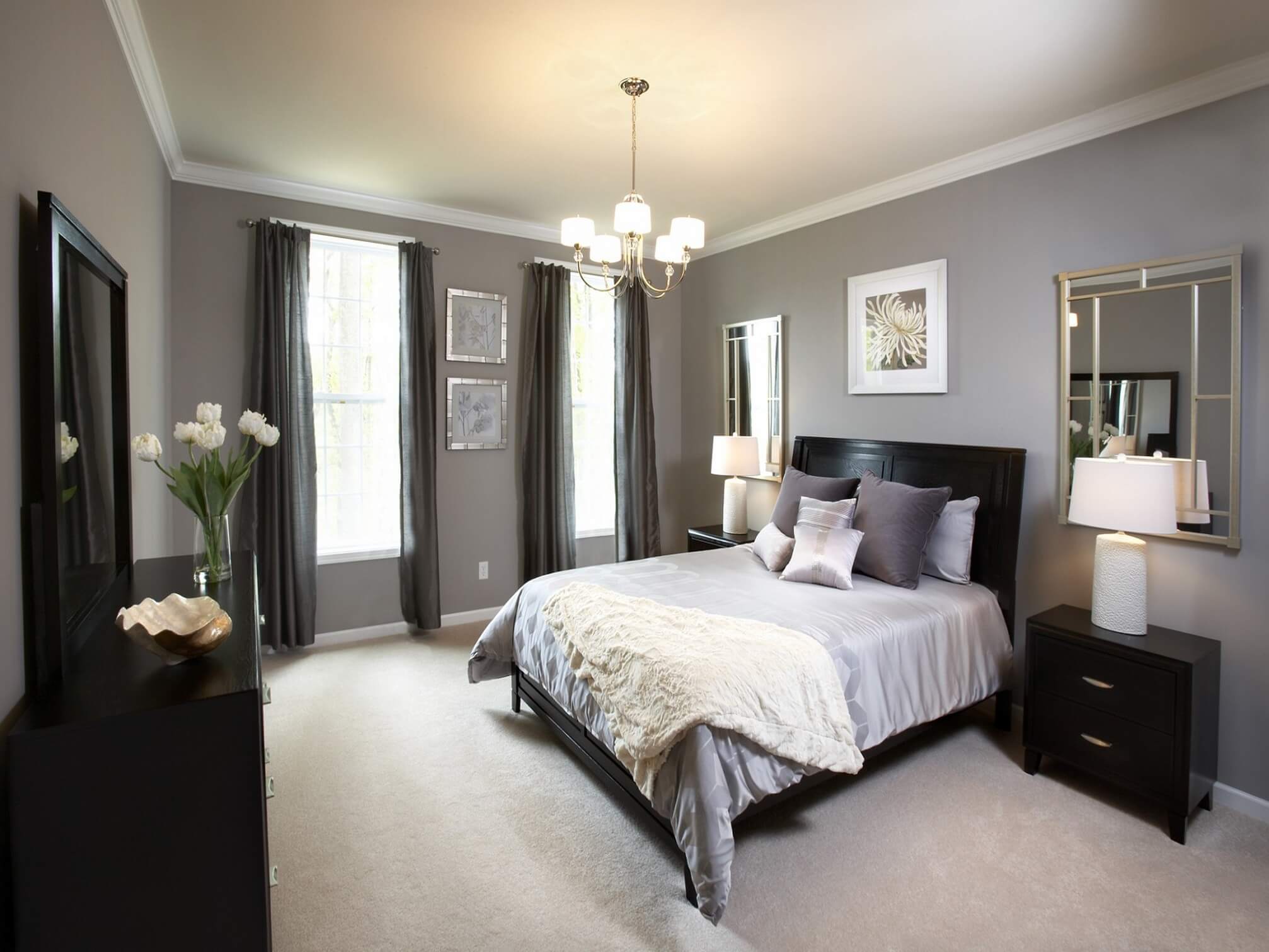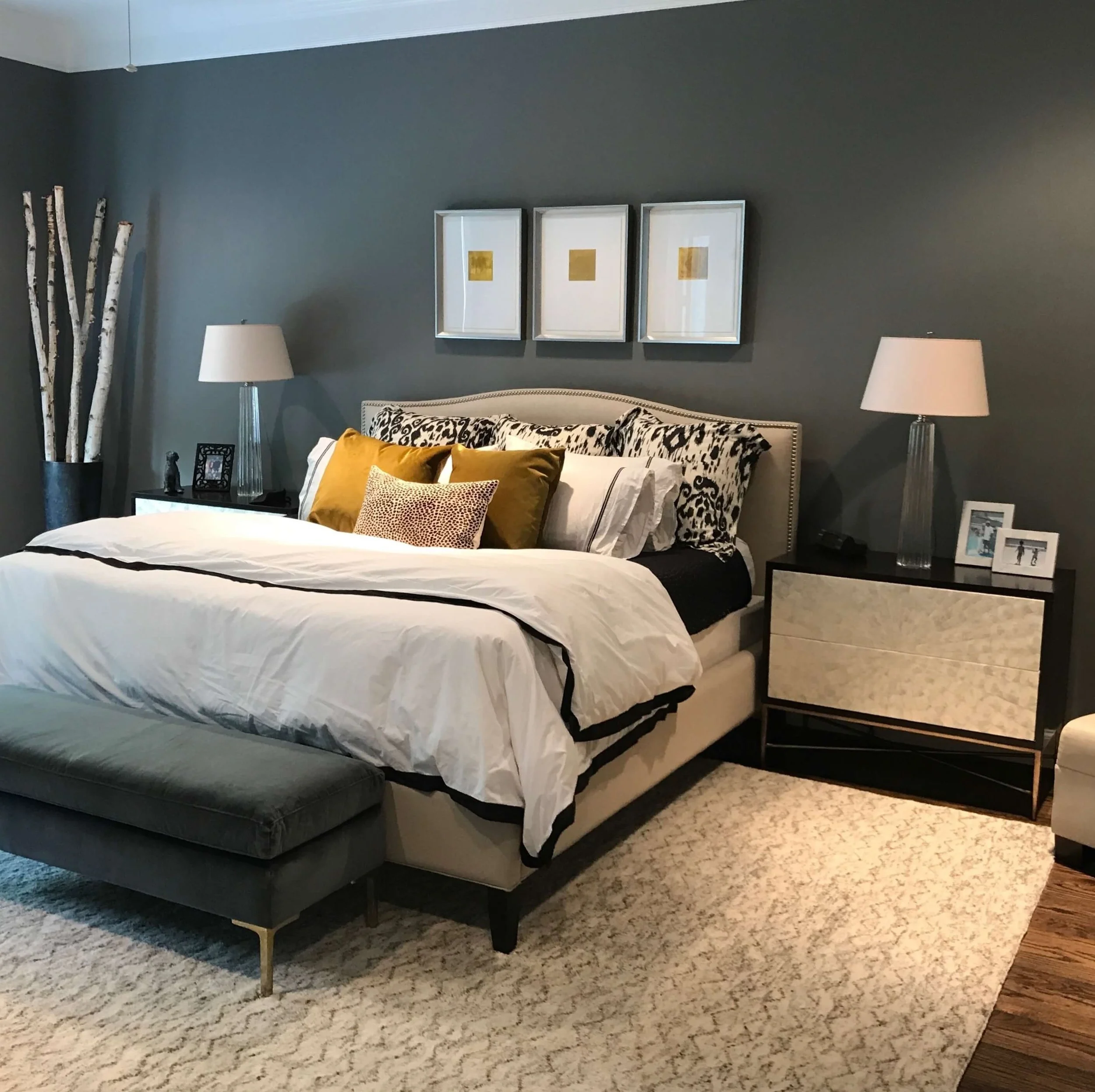Grey and Tan Bedroom Color Schemes

A grey and tan bedroom color scheme can be incredibly versatile, offering a range of possibilities to create a serene and stylish space. By understanding the nuances of these colors and their psychological effects, you can craft a bedroom that perfectly reflects your personal style and desired atmosphere.
Grey and Tan Color Combinations
The beauty of a grey and tan color scheme lies in its ability to be adapted to various tastes and preferences. The key is to select shades that complement each other and create the desired ambiance.
- Warm Tan and Cool Grey: This combination creates a sense of balance and harmony. A warm tan, such as a beige or a caramel, can add warmth and comfort, while a cool grey, like a slate or charcoal, provides a touch of sophistication.
- Light Grey and Light Tan: This pairing is perfect for creating a bright and airy bedroom. A light grey, such as a dove grey or a silver, can make the room feel larger and more spacious, while a light tan, such as a cream or a linen, adds a touch of warmth and softness.
- Dark Grey and Dark Tan: For a dramatic and sophisticated look, consider a dark grey and a dark tan. A charcoal grey paired with a chocolate brown or a deep taupe can create a rich and inviting atmosphere.
Psychological Effects of Grey and Tan
Grey and tan are both considered neutral colors, but their specific shades can evoke different emotions and sensations.
- Grey: Grey is often associated with calmness, sophistication, and peace. Lighter shades of grey can be uplifting and airy, while darker shades can create a sense of tranquility and formality.
- Tan: Tan is a warm and inviting color that is often associated with nature and comfort. Lighter shades of tan can create a sense of openness and serenity, while darker shades can be more grounding and cozy.
Examples of Grey and Tan Bedroom Color Palettes
Here are some examples of successful grey and tan bedroom color palettes, including accent colors and complementary shades:
- Cool Grey and Warm Tan with Teal Accents: This palette combines a cool grey wall with a warm tan headboard and accents of teal in throw pillows, a rug, or artwork. The teal adds a pop of color and creates a refreshing contrast against the neutral backdrop.
- Light Grey and Cream with Mustard Yellow Accents: This palette features a light grey wall with a cream headboard and accents of mustard yellow in throw pillows, a lampshade, or a piece of art. The mustard yellow adds a touch of warmth and vibrancy to the room.
- Dark Grey and Taupe with Copper Accents: This palette combines a dark grey wall with a taupe headboard and accents of copper in lighting fixtures, hardware, or decorative objects. The copper adds a touch of luxury and warmth to the room.
Furniture Selection and Arrangement: Grey And Tan Bedroom
Choosing the right furniture for a grey and tan bedroom is crucial to achieving a balanced and inviting atmosphere. You want pieces that complement the color scheme while also being functional and stylish. This section will discuss the best types of furniture for a grey and tan bedroom, including tips for arranging furniture to maximize space and create a welcoming ambiance.
Furniture Selection
When selecting furniture for a grey and tan bedroom, consider both style and functionality.
- Bed: The bed is the focal point of the room, so choose a style that complements the overall aesthetic. A platform bed with a headboard in a neutral color like white or beige can provide a clean and modern look. For a more traditional feel, a tufted headboard in a rich tan or grey fabric can add elegance and sophistication.
- Nightstands: Nightstands should be practical and stylish. Choose nightstands that match the bed’s style or complement the overall design theme. Consider using nightstands with drawers or shelves for storage.
- Dresser: A dresser is essential for storing clothes and other items. Choose a dresser that complements the bed and nightstands in style and color. A dresser with a mirror can help create a sense of space and add elegance to the room.
- Other Furniture: Other furniture pieces, such as a chair, ottoman, or bench, can add functionality and style to the room. A comfortable armchair can be a great place to relax and read, while an ottoman can provide extra seating or a footrest. A bench at the foot of the bed can be used for storage or as a place to sit and put on shoes.
Furniture Arrangement
Arranging furniture in a grey and tan bedroom can be a challenge, especially in smaller rooms. Here are some tips for maximizing space and creating a balanced and inviting atmosphere.
- Start with the Bed: The bed should be the focal point of the room, so place it in the most prominent position. If the room is small, place the bed against a wall to maximize floor space.
- Use Nightstands: Nightstands should be placed on either side of the bed. Choose nightstands that are the right height for the bed and that don’t block any walkways.
- Consider a Dresser: A dresser can be placed against a wall or in a corner. If space is limited, consider using a smaller dresser or a chest of drawers.
- Create Flow: Arrange furniture to create a natural flow through the room. Avoid placing furniture in a way that blocks walkways or makes the room feel cramped.
- Balance the Room: Balance the room by placing furniture on both sides of the bed and by using furniture of different heights. For example, a tall dresser can balance a low armchair.
Sample Layout
Here’s a sample layout for a grey and tan bedroom:
- Bed: Place the bed against the wall with the headboard centered.
- Nightstands: Place nightstands on either side of the bed, within easy reach.
- Dresser: Place the dresser against the opposite wall, creating a symmetrical look.
- Chair: Place a comfortable armchair in a corner of the room, creating a cozy reading nook.
- Ottoman: Place an ottoman in front of the chair for extra seating or as a footrest.
- Rug: Place a rug under the bed and nightstands to define the seating area.

